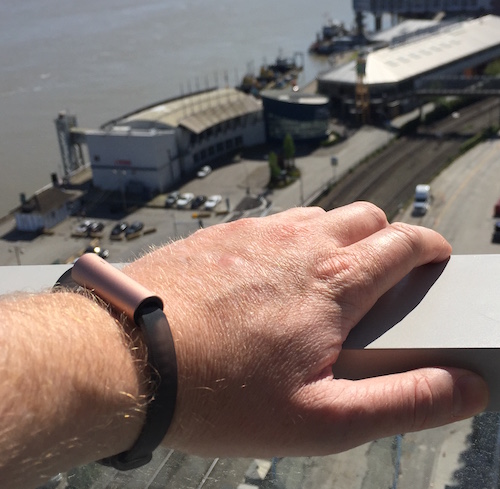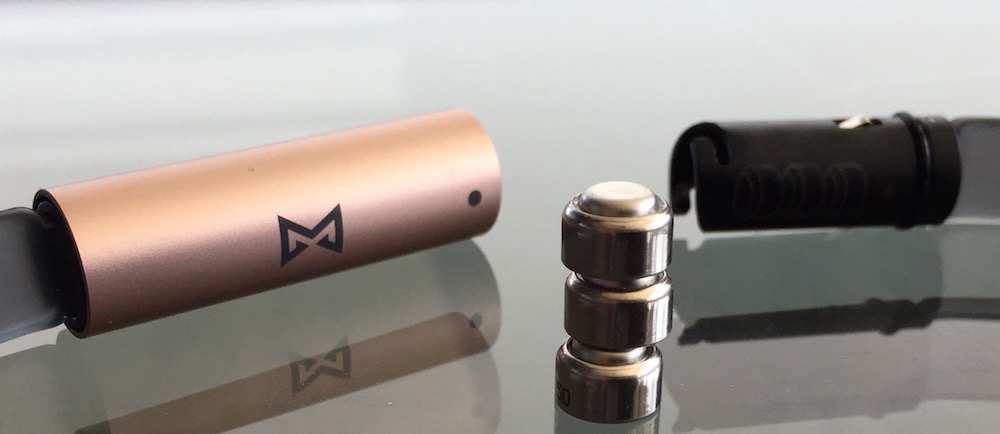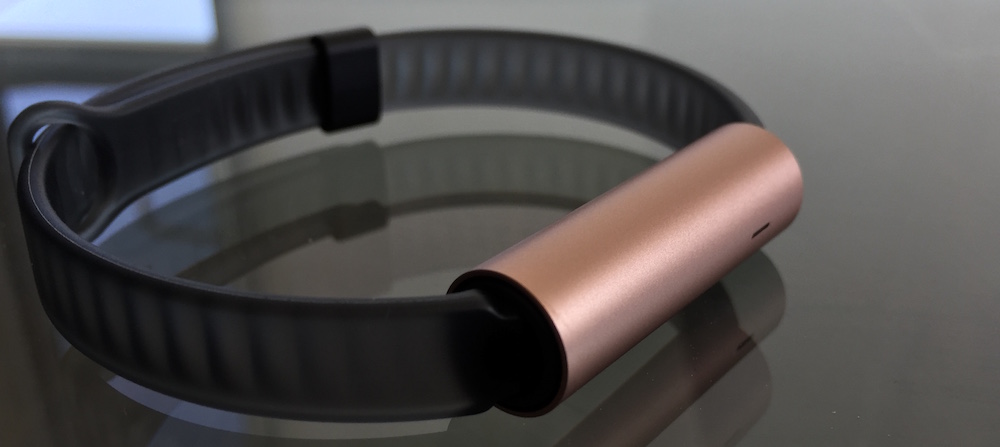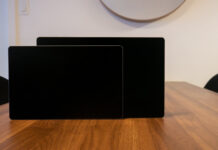 There are certain rituals we get used to: when I bought an Apple watch last year I became accustomed to taking it off at night and putting it on the magnetic stand to charge it. That’s why the first few nights with Misfit Ray I’ve taken the device off out of habit. It’s frustrating in the morning because I realize that I’ve missed out on some cool sleep data! It’s probably a good sign when you get upset that you’re not wearing a fitness tracker, right?
There are certain rituals we get used to: when I bought an Apple watch last year I became accustomed to taking it off at night and putting it on the magnetic stand to charge it. That’s why the first few nights with Misfit Ray I’ve taken the device off out of habit. It’s frustrating in the morning because I realize that I’ve missed out on some cool sleep data! It’s probably a good sign when you get upset that you’re not wearing a fitness tracker, right?
Unboxing Ray
Misfit is a company that is taking a different tack with fitness trackers; their thought is that the best tracker is the one you’re wearing right now, and they’ve done a lot to eliminate the reasons you’d take one off. In the past I’ve reviewed the Misfit Shine (I liked it) and the Misfit Flash (not so much, it felt cheap), and they’ve showed some similar characteristics. All three came in minimalist boxes. Packed in with Ray were three extremely small watch batteries and a tiny paper manual.
This actually led to my first issue with the Misfit Ray—inserting the batteries is actually something you can do very, very wrong. There are two videos on their website, one showing a user dropping batteries into the compartment, and another showing the batteries being stacked up and dropping the device down on top to get them inside. DO NOT FOLLOW THE FIRST METHOD; dropping the batteries in can result in them getting stuck diagonally and it’s a right pain to get them out.
Pairing Ray
After you’ve got the batteries in … well, that’s it for them for a while. I’m two weeks into using my Misfit Ray and it’s still at 100% battery life. This is the wonderful thing about this brand; yes, you have to replace some disposable batteries every six months or so, but you can recycle those, and you’re not sucking power out of your wall every night, or shipping the device with a bulky charger (which increases its carbon footprint from shipping as well). It’s a very eco-friendly device.
The case of the device is made from milled aluminum (or aloomineeyum if you’re Jonny Ive) with a single LED to indicate what’s going on with your fitness tracking for the day. A thin plastic strap in included, which fastens around your wrist much like the Apple watch, with a stud and loop mechanism.
 Pairing Ray went perfectly … the second time around. I received a prototype unit that didn’t quite function, as prototypes are wont to do. The production model, however, was absolutely flawless, which is what you can expect when you get yours home. Re-downloading the app (I’ve reviewed Misfit stuff in the past) and logging in showed me that it’s been nearly three years since I last had a Misfit Product on my person; the Shine was absolutely fantastic, but like all demo units it has to go back at the end of the review period (just in case you’ve ever worried about Best Buy Bloggers being “bribed” by free gear—it doesn’t happen!).
Pairing Ray went perfectly … the second time around. I received a prototype unit that didn’t quite function, as prototypes are wont to do. The production model, however, was absolutely flawless, which is what you can expect when you get yours home. Re-downloading the app (I’ve reviewed Misfit stuff in the past) and logging in showed me that it’s been nearly three years since I last had a Misfit Product on my person; the Shine was absolutely fantastic, but like all demo units it has to go back at the end of the review period (just in case you’ve ever worried about Best Buy Bloggers being “bribed” by free gear—it doesn’t happen!).
Pairing up was simple—add a new device, tap the Ray to my phone screen, select it when it shows up, and wait for it to update. The update took about ten minutes and I was ready to go, tracking my walking, running, cycling, and sleep over the course of the next few weeks.
Tracking with Ray
Using the Misfit Tracking app you can set your movement goal to whatever you’d like; Misfit uses an arbitrary points system that relates to how much you’ve moved and how often you’re moving throughout the day.
I set my goal at the standard 1000 points; on days when I went to the gym or went out cycling I absolutely crushed my goal. On more sedentary days I did not. As I mentioned earlier I found it difficult to remember to leave the darned thing on; it’s not that it’s uncomfortable while sleeping—in fact I completely forgot it was on when I DID leave it on … I’m just in the habit of sleeping without.
I wore Ray on my wrist; you can tell it where you’re putting it, because it can go around your ankle, your neck (with a necklace) or clip on in a variety of other ways. I do wish I’d been able to try some of the other ways of wearing the device, but alas it wasn’t to be this time around.

I didn’t find myself using the display on the unit to check my progress like I have with previous Misfit fitness trackers. Both the Shine and the Flash had a round face where LEDs would light up sequentially as you hit percentage points in your goal. The Misfit Ray does this by having the single LED light up in a series of colours … which was pretty hard to understand. That said, the physical feedback of a vibration reminding me to get up was far more valuable to me, and the minimalist look meant I felt comfortable wearing Ray everywhere.
So what’s the final verdict? If you want a fitness tracker that’s going to blend into your outfit without screaming “this person is trying to be more active”, you’ll want to check out Misfit Ray. It does the job well, and looks good doing it.






































